40 Daisy-Like Flowers With Growing Tips From RHS Gold Medalist Juliet Sargeant

Reviewed By ROY NICOL

Roy is a Professional Gardener and Horticultural Consultant, specialising in large garden year-round maintenance and garden development. He is an RHS Master of Horticulture and uses his research in the application of no-dig methods in ornamental garden settings. Roy has been a Professional Gardener for more than six years and is a member of the Chartered Institute of Horticulture, Professional Gardener's Guild and Association of Professional Landscapers (Professional Gardener).
Contributions From JULIET SARGEANT

Juliet is an award-winning Garden Designer who won a Gold Medal at the Chelsea Flower Show in 2016, as well as being voted the winner of the People’s Choice Award. She also is the founder of the Sussex Garden School and an RHS show garden judge. Juliet has a BA (Hons) in Garden Design from Middlesex University and is a Registered Fellow of the Society of Garden Designers.
IN THIS GUIDE
- 1) Daisy
- 2) African Daisy
- 3) Marguerite
- 4) Chamomile
- 5) Black-Eyed Susan
- 6) Hilton Daisy
- 7) Autumn Sneezeweed
- 8) Poached Egg Flower
- 9) Livingstone Daisy
- 10) Indian Chrysanthemum
- 11) Baby Sun Rose
- 12) Cupid’s Dart ‘Alba’
- 13) Crown Daisy
- 14) Beach Aster
- 15) Firewheel
- 16) Daisy Bush
- 17) Cooper’s Ice Plant
- 18) Chocolate Daisy
- 19) Tickseed ‘Grandiflora’
- 20) Compass Plant
- 21) Gazania
- 22) Zinnia ‘Profusion White’
- 23) Mexican Flame Vine
- 24) Painted Daisy
- 25) Great Leopard’s Bane
- 26) Butter Daisy
- 27) Gaillardia
- 28) Shasta Daisy
- 29) Pot Marigold
- 30) Blackfoot Daisy
- 31) Mexican Sunflower
- 32) Michaelmas Daisy
- 33) Sunflower ‘Lemon Queen’
- 34) Ox-Eye Daisy
- 35) Gerbera Daisy
- 36) Dyer’s Tickseed
- 37) Purple Coneflower
- 38) Curly Leaf Daisy
- 39) African Daisy ‘Flame’
- 40) Florist’s Cineraria
Daisies are beautiful flowers that are easily recognisable here in the UK and can bring a simple touch of colour to any garden display.
Typically, daisies are made up of a central, usually colourful, disk that is surrounded by long, thin petals that often come in layers.
There are lots of plants that produce flowers that resemble daisies, so if you are looking specifically for a daisy-like bloom (perhaps in a more unusual colour or shape) you’ve come to the right place.
“Pollinators such as bees and butterflies are attracted to these open-structured flowers where plenty of nectar is available to them,” shares Roy Nicol, a Master Horticulturist.
We share 40 plants with daisy-like flowers that you can grow in your garden (or in the home for some of our more tender plant types).
1) Daisy

- BOTANICAL NAME: Bellis perennis
- HARDINESS RATING: H7
- PLANT TYPE: perennial
- FLOWERS: yellow, white and pink
- FLOWERING SEASON(S): spring / summer
- SIZE: 0-0.1m in height, 0-0.1m spread
I had to start the list with the daisy most commonly found here in the UK.
Bellis perennis is a fully-hardy perennial that is often found in fields or woodland areas and bears the classic daisy shape that the rest of the plants in this guide emulate.
This small plant is unfussy and can be grown in most conditions, but will look best in a wildflower meadow.
2) African Daisy

- BOTANICAL NAME: Osteospermum jucundum
- HARDINESS RATING: H3
- PLANT TYPE: perennial
- FLOWERS: purple
- FLOWERING SEASON(S): summer / autumn
- SIZE: 0.1-0.5m in height, 0.5-1m spread
African daisies produce short-lived flowers in many colours throughout summer and autumn and have a spreading habit, growing up to 1m wide with half the height.
These perennials are frost-tender, so make sure to provide some winter protection over the colder months, such as a mulch or horticultural fleece.
3) Marguerite

- BOTANICAL NAME: Argyranthemum frutescens
- HARDINESS RATING: H2
- PLANT TYPE: perennial / sub-shrub
- FLOWERS: yellow, pink and white
- FLOWERING SEASON(S): summer
- SIZE: 0.5-1m in height, 0.5-1m spread
With 2cm wide blooms that come in shades of pink and white, marguerite is an evergreen perennial that is best suited for container cultivation, so it can be moved to a warmer location during the winter.
It bears striking similarities to a colourful Chrysanthemum, which is perhaps why members of this plant family are sometimes categorised in the same genus.
4) Chamomile

- BOTANICAL NAME: Chamaemelum nobile
- HARDINESS RATING: H7
- PLANT TYPE: herb / perennial
- FLOWERS: white and yellow
- FLOWERING SEASON(S): summer
- SIZE: 0.1-0.5m in height, 0.1-0.5m spread
Chamomile is one of my favourite daisy-like flowers as it is a low-maintenance perennial that is a great companion plant for lots of shrubs, trees and vegetables.
Plant this deciduous herb in your vegetable gardens to act as a ground cover plant and to also repel pests by attracting beneficial pollinators.
“The non-flowering cultivar Chamaemelum nobile ‘Treneague’ can be used to create a chamomile lawn where the soil is light, which is a great alternative to grass where foot traffic is low,” says Roy.
5) Black-Eyed Susan
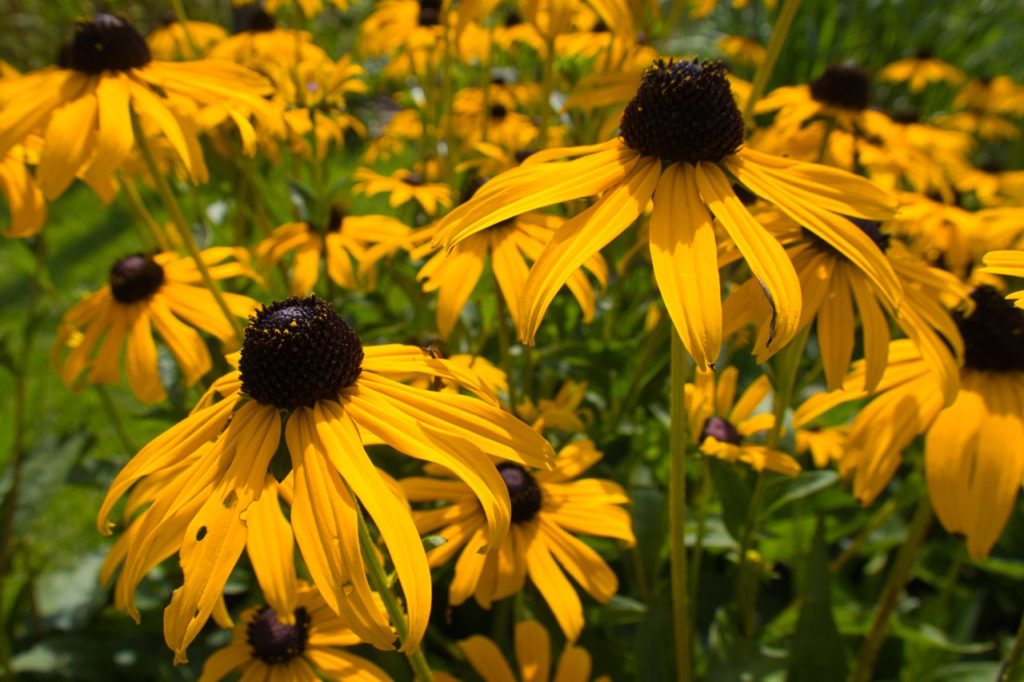
- BOTANICAL NAME: Rudbeckia fulgida
- HARDINESS RATING: H6
- PLANT TYPE: perennial
- FLOWERS: gold, brown and yellow
- FLOWERING SEASON(S): summer / autumn
- SIZE: 0.5-1m in height, 0.5-1m spread
Producing stunning yellow florets and brown-black centres, black-eyed Susan looks like an eccentric sunflower and is a hardy perennial that can grow up to 1m tall and wide.
You can plant rudbeckia in your flower borders and beds for a splash of colour, or grow this perennial in a wildflower meadow for a more natural display.
6) Hilton Daisy
- BOTANICAL NAME: Gerbera aurantiaca
- HARDINESS RATING: H3
- PLANT TYPE: perennial / annual
- FLOWERS: red, orange, white and yellow
- FLOWERING SEASON(S): spring / summer / autumn
- SIZE: 0.5-1m in height, 0.5-1m spread
The Hilton Daisy is a rare short-lived perennial that is usually grown for its bright red flowers that bloom from spring to autumn.
This plant is often used as a cut flower in bouquets or indoor displays around the home.
7) Autumn Sneezeweed
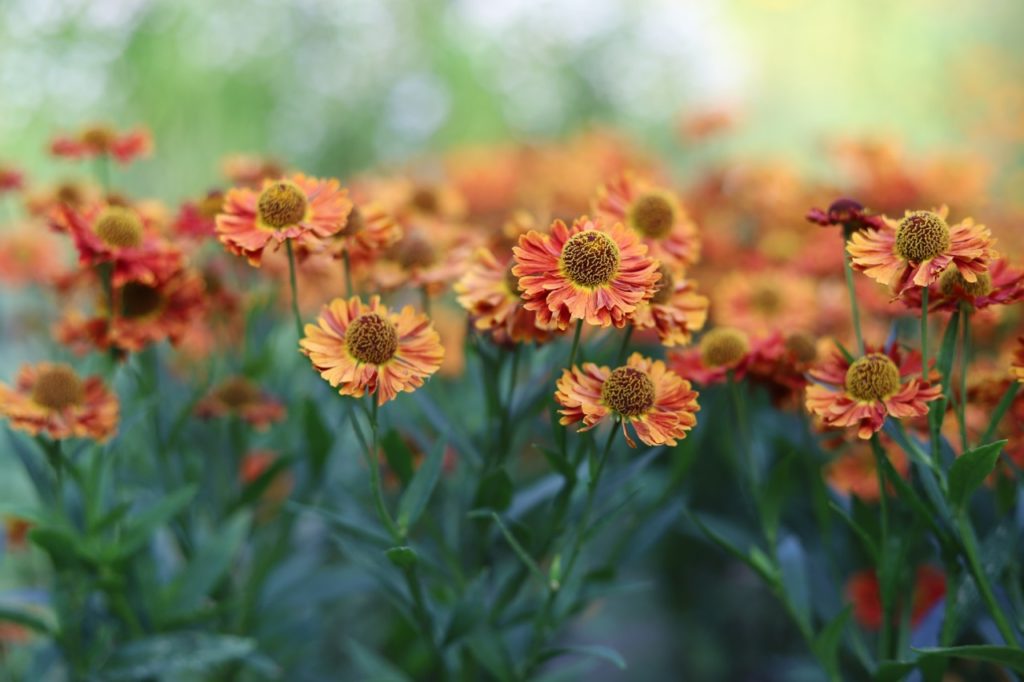
- BOTANICAL NAME: Helenium autumnale
- HARDINESS RATING: H7
- PLANT TYPE: perennial
- FLOWERS: brown and yellow
- FLOWERING SEASON(S): summer / autumn
- SIZE: 1-1.5m in height, 0.1-0.5m spread
Growing on stems up to 1.5m high that are covered with thin green leaves, Autumn Sneezeweed bears flowers with frilly brown centres that are surrounded by yellowy-orange petals.
This plant works well in a wildlife-friendly garden, as its open blooms are a delight for pollinators – and provide pollen late in the season when much else has died away.
“An excellent cultivar used extensively in gardens is Helenium ‘Moerheim Beauty’ which has rich copper-red flowers from mid to late summer,” Roy adds.
8) Poached Egg Flower
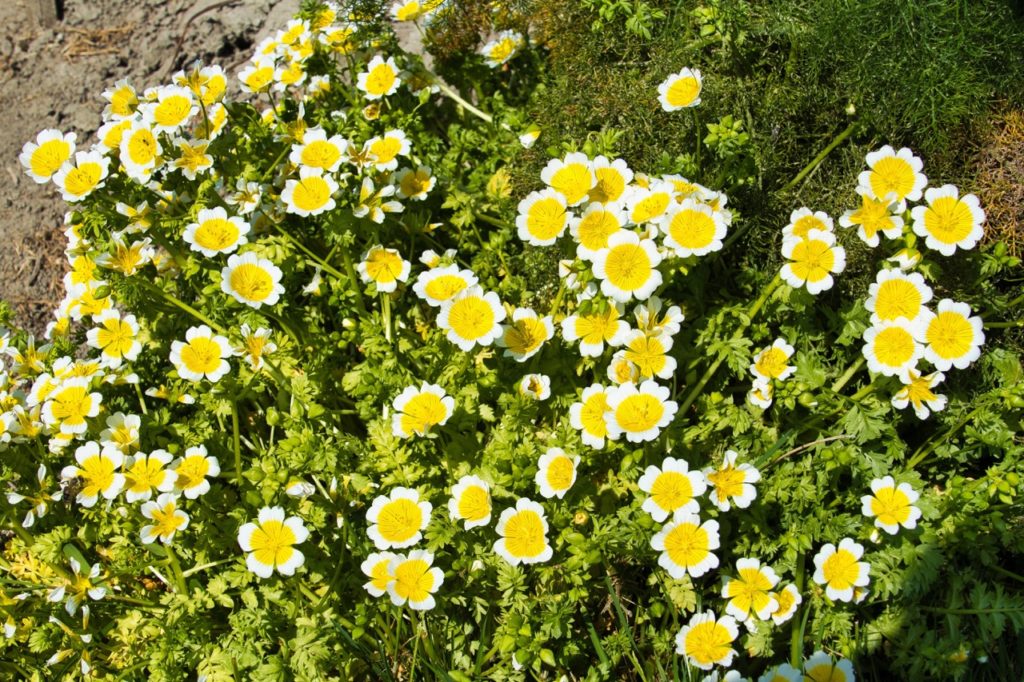
- BOTANICAL NAME: Limnanthes douglasii
- HARDINESS RATING: H5
- PLANT TYPE: annual
- FLOWERS: yellow and white
- FLOWERING SEASON(S): summer / autumn
- SIZE: 0.1-0.5m in height, 0.1-0.5m spread
Limnanthes douglasii, more commonly referred to as the poached egg flower, is a unique daisy-like annual that has white-tipped petals and yellow centres, giving it the appearance of – you guessed it – a poached egg.
As a deserving recipient of the RHS Award of Garden Merit, this plant is a delight to grow in UK gardens and would be a lovely addition to flower borders or beds.
9) Livingstone Daisy
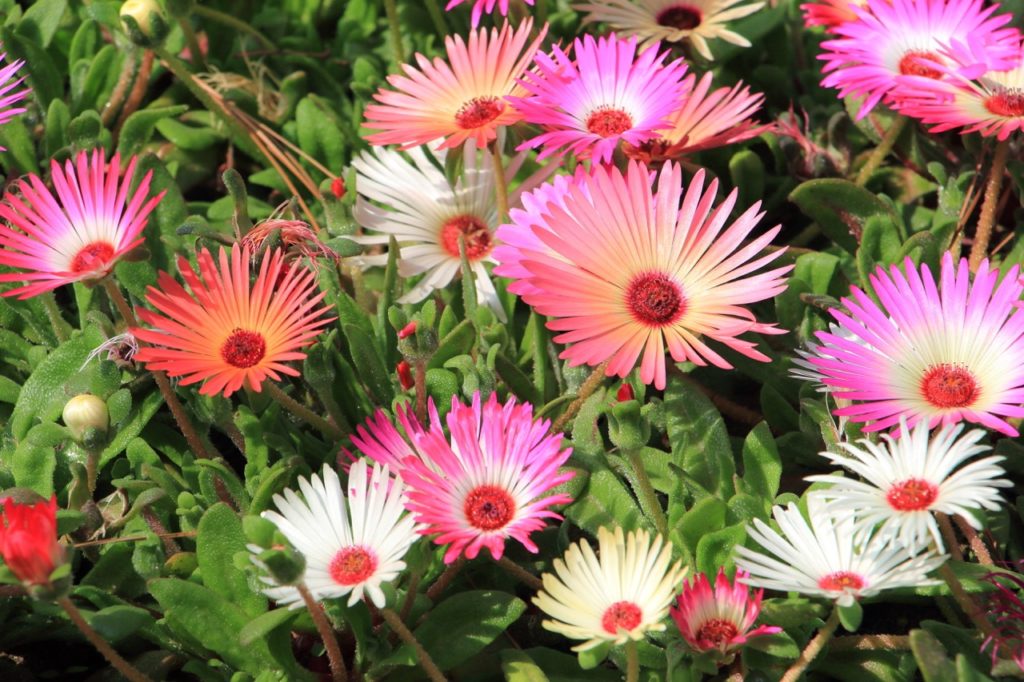
- BOTANICAL NAME: CLERETUM BELLIDIFORME
- HARDINESS RATING: H3
- PLANT TYPE: succulent / annual
- FLOWERS: purple, yellow, pink, orange and cream
- FLOWERING SEASON(S): summer
- SIZE: 0-0.1m in height, 0.1-0.5m spread
Although technically a succulent (you can tell by its thick waxy leaves) Cleretum bellidiforme produces colourful daisies that mirror those of any usual garden flower.
You can grow this plant indoors, but I’d recommend planting it outside with other summer-flowering annuals.
10) Indian Chrysanthemum

- BOTANICAL NAME: Chrysanthemum indicum
- HARDINESS RATING: H4
- PLANT TYPE: perennial
- FLOWERS: yellow
- FLOWERING SEASON(S): summer / autumn
- SIZE: 0.5-1m in height, 0.5-1m spread
The Indian chrysanthemum is a half-hardy perennial which grows best in any sheltered location that receives plenty of sun.
These stand-out yellow blooms are highly fragrant and would work well planted near doors or on the edge of garden paths so you can really appreciate the lemony aroma during its flowering seasons.
“In colder parts of the UK, these plants can be overwintered by lifting them in the late autumn and storing the crowns in a frost-free location in slightly damp compost,” says Roy.
“In the spring, when brought into the warmth, they will re-shoot, at which point careful watering can be started.”
11) Baby Sun Rose

- BOTANICAL NAME: Aptenia cordifolia
- HARDINESS RATING: H2
- PLANT TYPE: succulent / houseplant
- FLOWERS: pink, red and purple
- FLOWERING SEASON(S): summer / autumn
- SIZE: 0-0.1m in height, 0.1-0.5m spread
Baby sun rose bears pink, red and purple flowers during summer and autumn.
Another succulent, this trailing frost-tender evergreen is best grown in a container indoors in well-draining compost with added grit where it can benefit from its preferred conditions year-round.
Place it outdoors in the summer to make the most of the abundance of sunshine.
12) Cupid’s Dart ‘Alba’
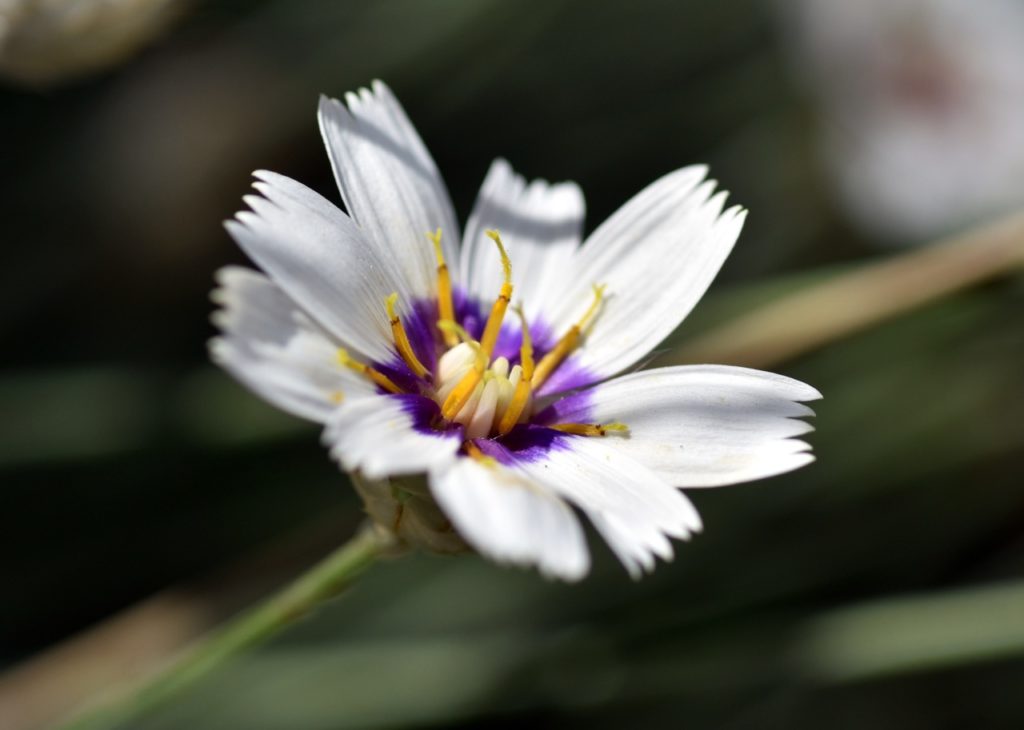
- BOTANICAL NAME: Catananche caerulea ‘Alba’
- HARDINESS RATING: H5
- PLANT TYPE: perennial
- FLOWERS: white
- FLOWERING SEASON(S): summer / autumn
- SIZE: 0.5-1m in height, 0.1-0.5m spread
With layered white petals that are tinged with purple towards the centre, cupid’s dart ‘Alba’ offers unusual-looking flowers that will bring something different to your garden beds.
You can grow ‘Alba’ in a gravel or rock garden – or use the cut flowers as a living display in your home.
“This short-lived perennial enjoys sunny positions in well-drained light soils,” explains Roy.
13) Crown Daisy
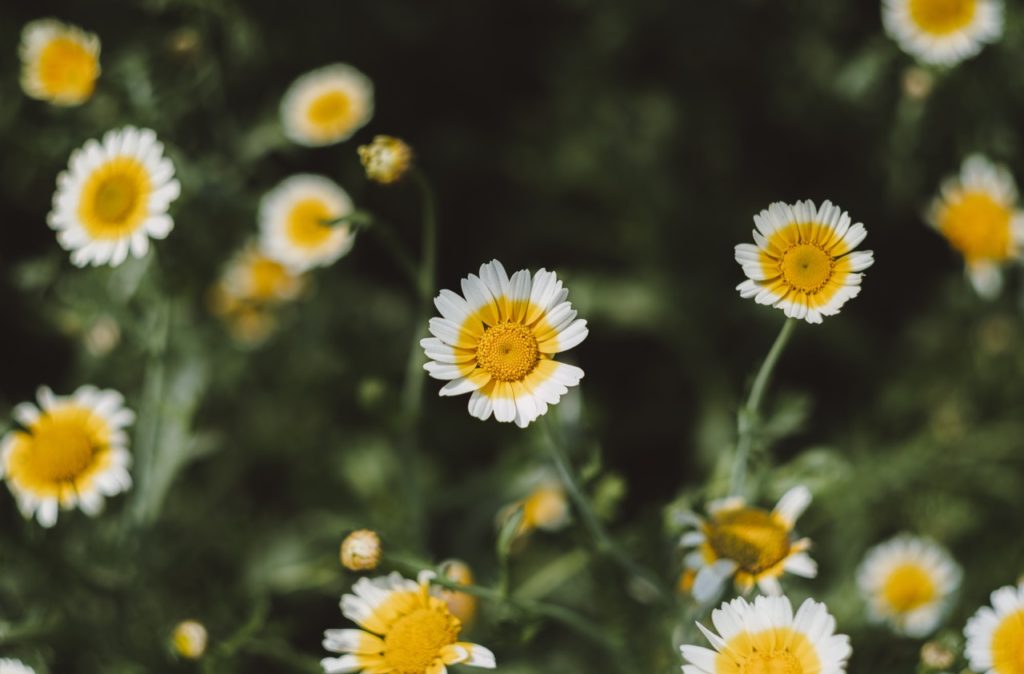
- BOTANICAL NAME: Glebionis coronaria
- HARDINESS RATING: H7
- PLANT TYPE: annual
- FLOWERS: yellow, brown and white
- FLOWERING SEASON(S): spring / summer
- SIZE: 0.5-1m in height, 0.1-0.5m spread
Crown daisies are another plant that looks like the inside of a recently cracked boiled egg, but these fully hardy plants can also have dark brown centres and grow on stems that can reach 1m tall.
These delightful daisy-like blooms would work well in an annual wildflower display and will pair nicely with some other hardy annuals in this list.
14) Beach Aster
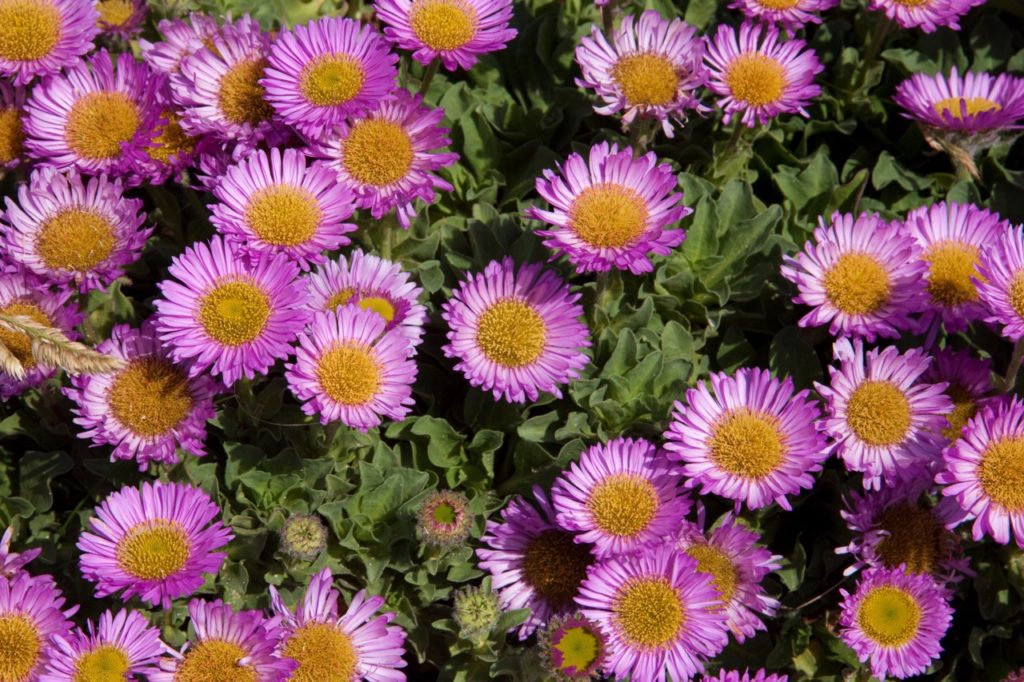
- BOTANICAL NAME: Erigeron glaucus
- HARDINESS RATING: H5
- PLANT TYPE: perennial
- FLOWERS: purple and yellow
- FLOWERING SEASON(S): summer
- SIZE: 0.2m in height, 0.3m spread
Erigeron glaucus, or beach asters, are hardy perennials with evergreen foliage and flowers that are great for pollinators.
With an abundance of frilly purple blooms that appear in summer, this plant would look great in a low-growing garden border or used as an edging plant in a sunny position in light soil.
15) Firewheel
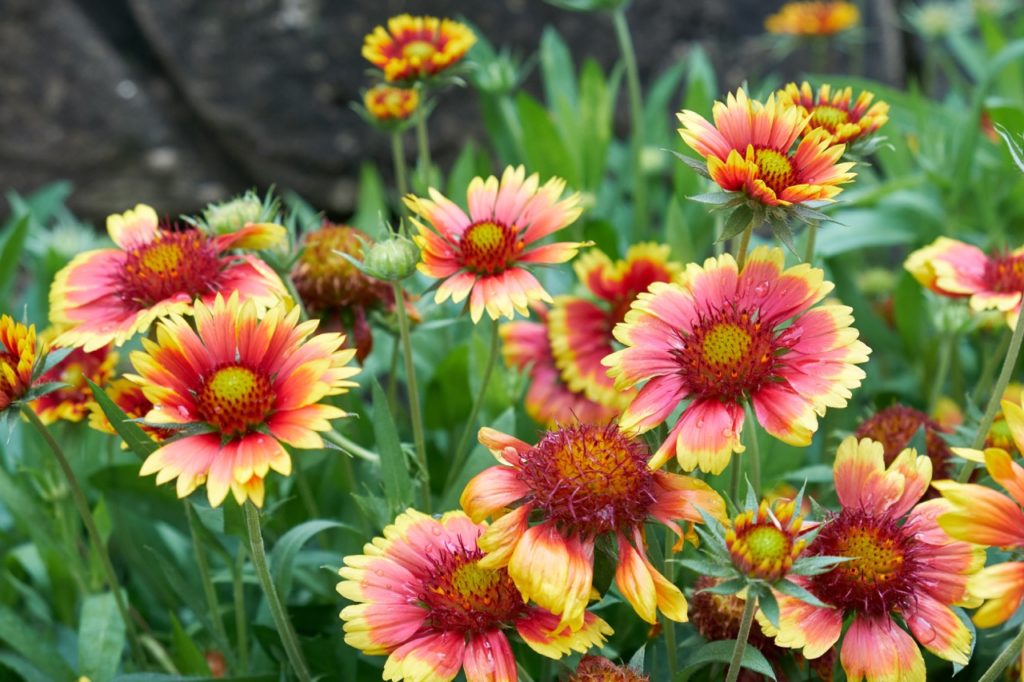
- BOTANICAL NAME: Gaillardia pulchella
- HARDINESS RATING: H4
- PLANT TYPE: annual
- FLOWERS: red and yellow
- FLOWERING SEASON(S): summer and autumn
- SIZE: 0.1-0.5m in height, 0.1-0.5m spread
Producing fiery flowers with red petals that are tipped in yellow, Gaillardia pulchella, also known as Firewheel, is aptly named.
Usually grown as an annual here in the UK, this long-flowering plant can be a great choice for gardens that do not have as much space for planting, as these bright blooms can also work well as a stand-alone plant in a very small area.
Make sure to give them plenty of sun in free-draining soil if you’d like them to flower to their full potential.
16) Daisy Bush
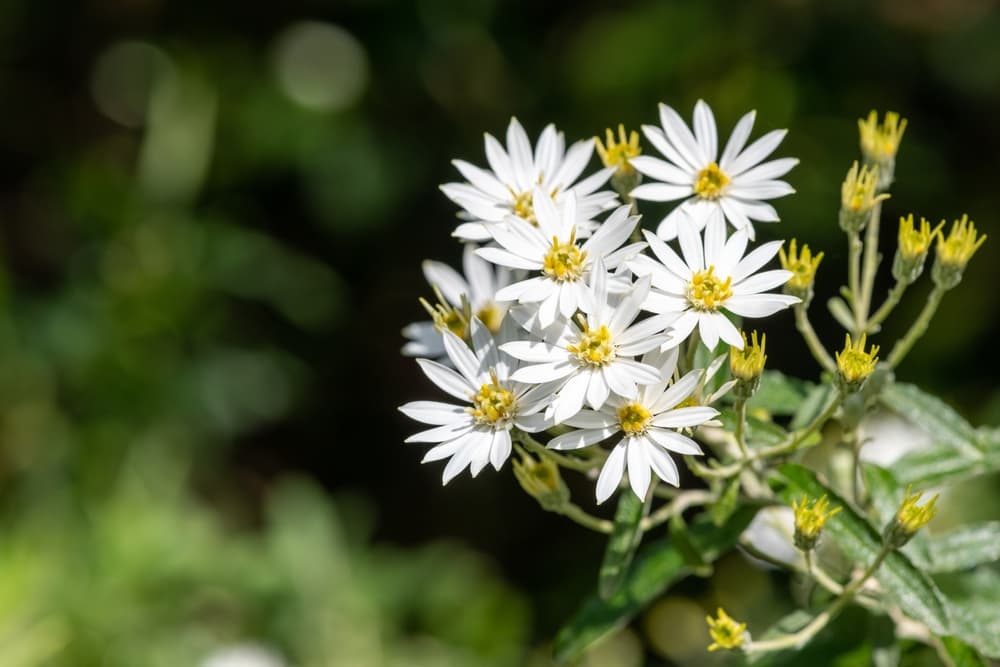
- BOTANICAL NAME: Olearia x MOLLIS
- HARDINESS RATING: H4
- PLANT TYPE: shrub
- FLOWERS: white
- FLOWERING SEASON(S): summer
- SIZE: 1.5-2.5m in height, 2.5-4m spread
The daisy bush is slightly different to the other plants featured in this list.
It features clusters of tiny, white daisy-like flowers growing from woody stems – reaching up to 2.5m in height and almost double the width.
The flowers appear in bunches during the summer months.
This evergreen shrub can be used at the back of garden beds or for hedging and natural screening.
“I’m growing Olearia at the moment, which is a great evergreen shrub that has a pink or white flower,” shares Garden Designer Juliet Sargeant.
“It’s a Mediterranean plant that you can’t really grow in the colder areas of the UK, but I live by the coast down south and it’s proving to be a really useful plant that I would definitely recommend if you can grow it.”
17) Cooper’s Ice Plant
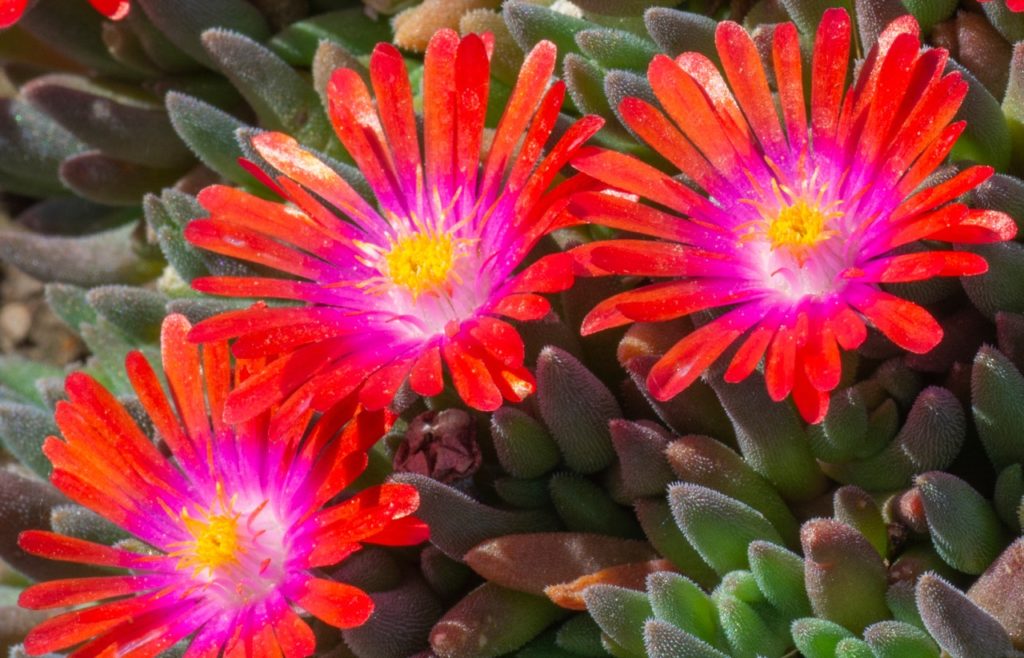
- BOTANICAL NAME: Delosperma cooperi
- HARDINESS RATING: H4
- PLANT TYPE: succulent / houseplant
- FLOWERS: pink, red and purple
- FLOWERING SEASON(S): summer
- SIZE: 0-0.1m in height, 0.5-1m spread
Although it is commonly grown as a houseplant, I think cooper’s ice plant would be a great choice for a dry gravel garden or rockery, as it needs a sandy growing medium that does not retain moisture.
As long as this plant is grown in a sheltered position in full sun, you will be able to enjoy its colourful summer blooms for years to come.
18) Chocolate Daisy

- BOTANICAL NAME: Berlandiera lyrata
- HARDINESS RATING: H5
- PLANT TYPE: perennial
- FLOWERS: yellow
- FLOWERING SEASON(S): summer
- SIZE: 0.1-0.5m in height, 0.1-0.5m spread
The chocolate daisy (so-named as its green-grey foliage smells of chocolate) is a yellow flowering perennial that has a darker centre and a circle of red and brown stamina that line the edge of its centre.
This rare flower is popular with butterflies and will make a great choice in a meadow planting scheme.
19) Tickseed ‘Grandiflora’
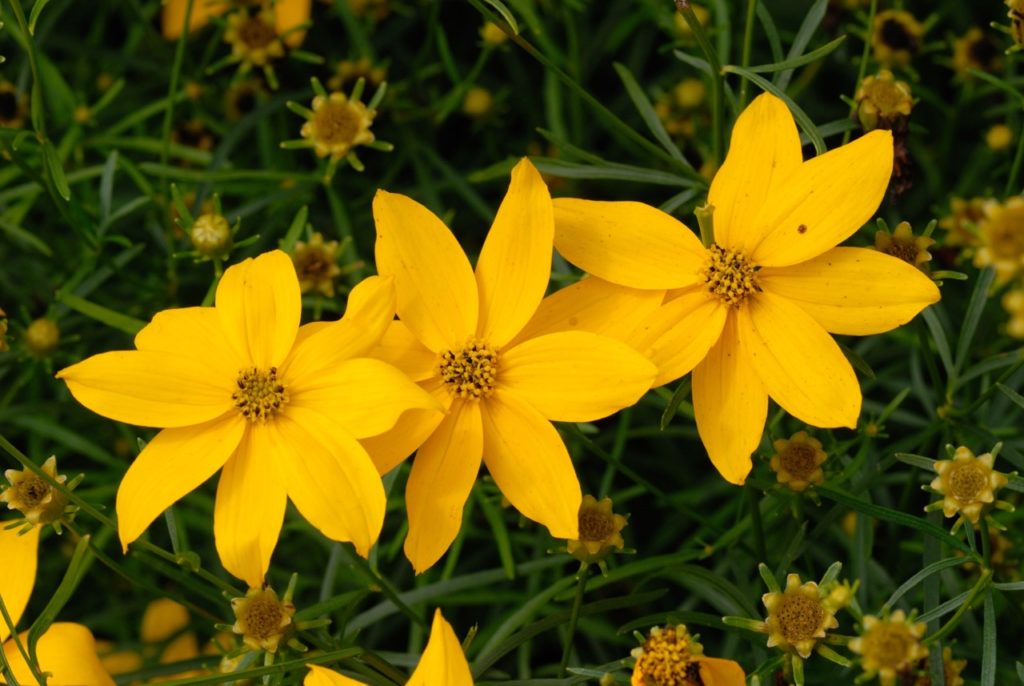
- BOTANICAL NAME: Coreopsis verticillata ‘Grandiflora’
- HARDINESS RATING: H5
- PLANT TYPE: perennial
- FLOWERS: yellow
- FLOWERING SEASON(S): summer / autumn
- SIZE: 0.5-1m in height, 0.1-0.5m spread
Another daisy-looking perennial with yellow flowers, tickseed ‘Grandiflora’ makes a lovely addition to many garden displays.
Flowering throughout summer and into autumn and growing to around 1m in height with half the spread, I would plant this tickseed in garden planters or raised beds.
20) Compass Plant
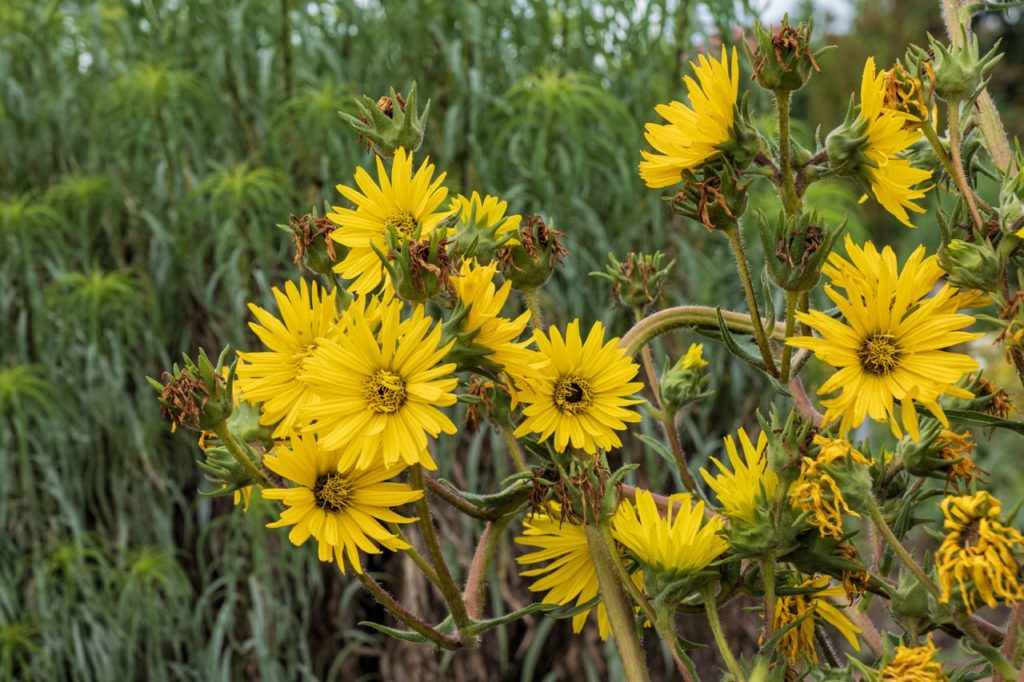
- BOTANICAL NAME: Silphium laciniatum
- HARDINESS RATING: H7
- PLANT TYPE: perennial
- FLOWERS: yellow
- FLOWERING SEASON(S): summer / autumn
- SIZE: 2.5-4m in height, 0.5-1m spread
Growing up to 4m tall, the thick sturdy stems of the compass plant display large yellow daises that have more than a passing resemblance to some sunflower varieties.
This hardy perennial is tall and can be grown against a wall or trellis as the backdrop to a garden bed, but avoid acidic soils.
21) Gazania

- BOTANICAL NAME: Gazania linearis
- HARDINESS RATING: H2
- PLANT TYPE: perennial
- FLOWERS: orange, red and yellow
- FLOWERING SEASON(S): spring / summer
- SIZE: 0.1-0.5m in height, 0.1-0.5m spread
Gazania linearis produces stunning daisy-like blooms in shades of orange, red and yellow throughout spring and summer and is guaranteed to liven up any garden display.
As a frost-tender perennial, make sure you are protecting your gazania over the colder months.
I always think container growing for less hardy plants like gazania is the way to go, as you can then move the pot indoors or to a warmer location over winter.
“Last autumn I dug up a whole group of Gazanias from a border and after repotting, overwintered them in a light frost-free position,” shares Roy.
“In the late spring, they were settled back into the border and flowering well by early summer.”
22) Zinnia ‘Profusion White’

- BOTANICAL NAME: Zinnia ‘Profusion White’
- HARDINESS RATING: H2
- PLANT TYPE: annual
- FLOWERS: yellow and gold
- FLOWERING SEASON(S): summer / autumn
- SIZE: 0.1-0.5m in height, 0.1-0.5m spread
This white zinnia variety opens its white petals to reveal a gold centre, blooming throughout summer and right up until late autumn.
‘Profusion White’ is another H2 hardy plant, but as it is usually grown as an annual here in the UK, you can grow it in your mixed bedding with other short-lived flowers.
This plant holds the RHS Award of Garden Merit (AGM), meaning it has been proven to perform reliably in gardens.
23) Mexican Flame Vine

- BOTANICAL NAME: PSEUDOGYNOXYS CHENOPODIOIDES
- HARDINESS RATING: H1C
- PLANT TYPE: shrub / climber / houseplant
- FLOWERS: orange and red
- FLOWERING SEASON(S): summer
- SIZE: 4-8m in height, 1.5-2.5m spread
Mexican flame vine is a shrub that will do best when grown in a heated greenhouse or as a houseplant.
With bright orange blooms and fragrant flowers, this shrubby climber will need to be kept in check as it can reach staggering heights if it is not pruned back.
It can also be grown to cascade down walls where an opportunity exists to plant from above.
Grow Mexican flame vine in a loamy potting medium with access to bright and direct sunlight.
24) Painted Daisy
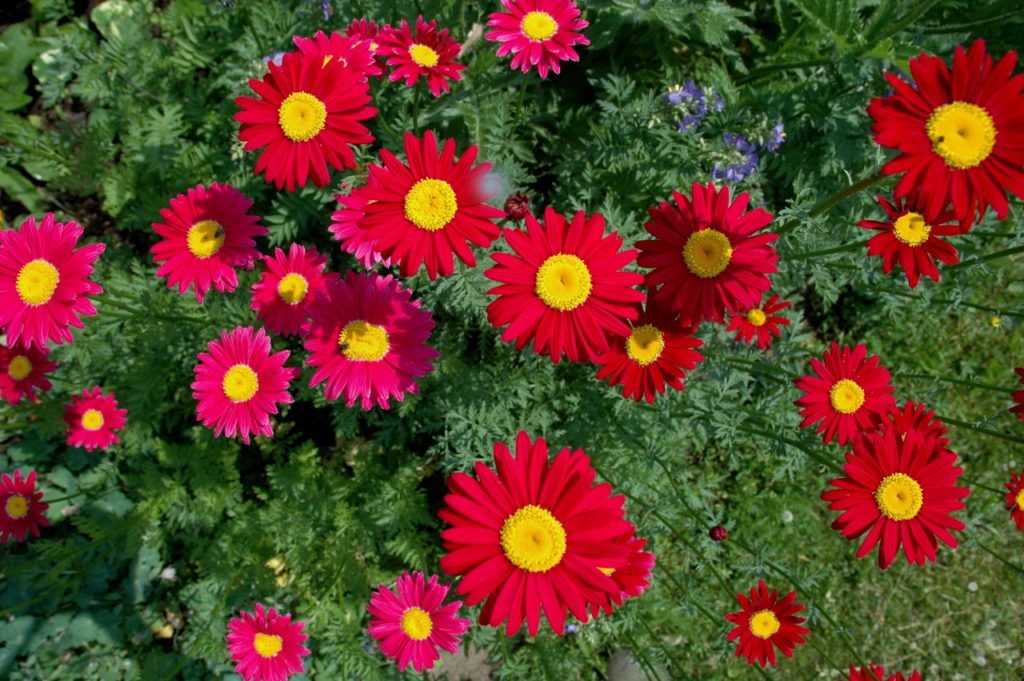
- BOTANICAL NAME: Tanacetum coccineum
- HARDINESS RATING: H7
- PLANT TYPE: perennial
- FLOWERS: pink, yellow, white and red
- FLOWERING SEASON(S): summer
- SIZE: 0.5-1m in height, 0.1-0.5m spread
This gorgeous perennial bears bright colourful daisies that are usually pink or red with yellow centres on stems that grow up to 1m tall.
Painted daisies are easy to grow and have bushy foliage, making them great for planting in garden beds or borders.
They also work great as a cut flower placed in a vase indoors.
25) Great Leopard’s Bane

- BOTANICAL NAME: Doronicum pardalianches
- HARDINESS RATING: H5
- PLANT TYPE: perennial
- FLOWERS: yellow
- FLOWERING SEASON(S): spring
- SIZE: 0.5-1m in height, 0.5-1m spread
Often found in woodland areas due to its ability to spread underground by its tuberous runners and preference for partial shade, rhizomatous great leopard’s bane will need to be kept in check to prevent it from spreading horizontally.
Some gardeners consider it bordering on invasive, so this might be a plant like bamboo that is better grown in containers to restrict its roots.
However, if you have the time and patience, its tall, yellow, daisy-like flowers will brighten up your garden in spring and can be a great cut flower for displays inside the home.
26) Butter Daisy

- BOTANICAL NAME: Melampodium divaricatum
- HARDINESS RATING: H7
- PLANT TYPE: annual
- FLOWERS: yellow
- FLOWERING SEASON(S): summer
- SIZE: 0.1-0.5m in height, 0.1-0.5m spread
The butter daisy is a fully hardy annual that is great for growing in lawns or wildflower meadows with other low-maintenance plants.
It is characterised by its small, deep yellow flowers that arrive on long thin stems and its ovate green leaves.
Although this diminutive flower might not be a show-stopper, it’s perfect for adding a touch of colour to underserviced areas of your garden.
27) Gaillardia
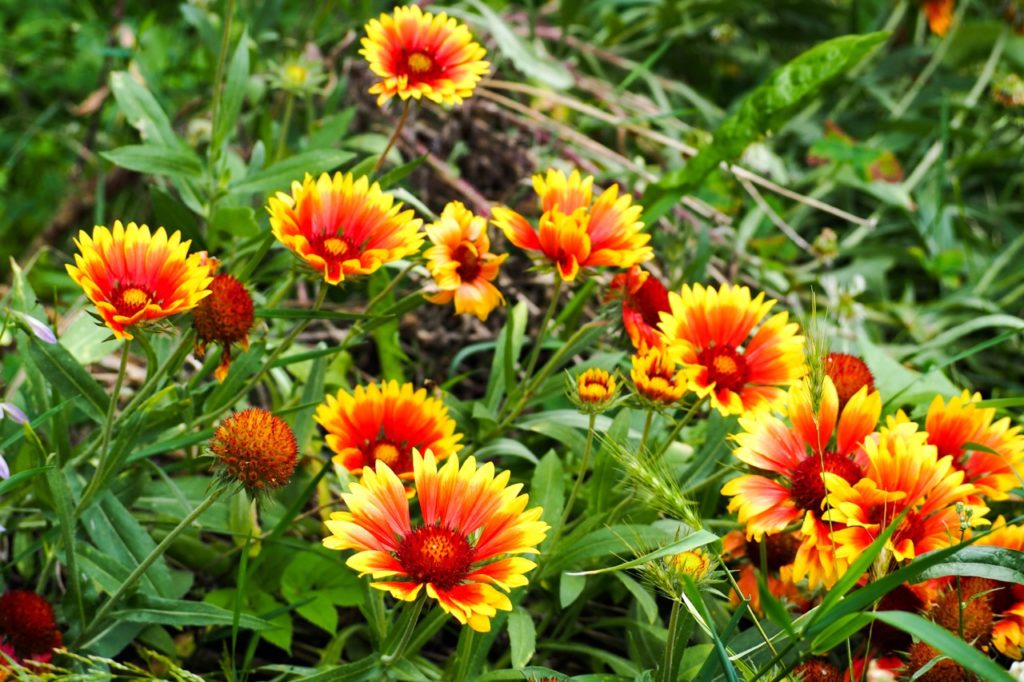
- BOTANICAL NAME: Gaillardia aristata
- HARDINESS RATING: H4
- PLANT TYPE: perennial
- FLOWERS: red and yellow
- FLOWERING SEASON(S): summer / autumn
- SIZE: 0.5-1m in height, 0.5-1m spread
Gaillardia aristata, more often called the common gaillardia, is a half-hardy perennial with many cultivars producing an abundance of large flower heads with red petals that are tipped with a bright yellow.
Grow this plant in a spot that gets plenty of sun and make sure it never sits in moist soil for too long, as gaillardia prefers to grow in soil that is always well-drained.
“From the North American prairies, this plant looks great when grown with tall grasses such as Calamagrostis behind it and is drought tolerant, making it useful in planting schemes in sunny positions with poor soil,” says Roy.
28) Shasta Daisy
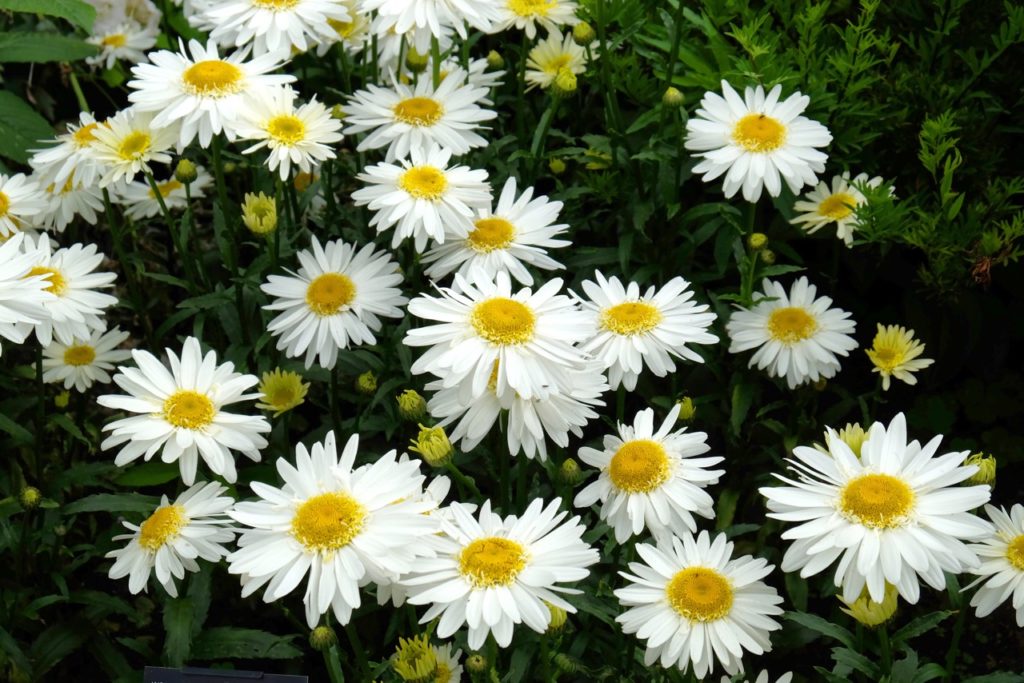
- BOTANICAL NAME: Leucanthemum × superbum
- HARDINESS RATING: H5
- PLANT TYPE: perennial
- FLOWERS: white and yellow
- FLOWERING SEASON(S): summer / autumn
- SIZE: 0.5-1m in height, 0.5-1m spread
Probably one of the more well-known daisy-type varieties, the Shasta daisy produces showy white flowers with yellow centres on tall, sturdy stems.
As long as this perennial is planted in a position where it will be sheltered from any strong winds, it will be relatively easy to grow and won’t require much additional care once established.
29) Pot Marigold
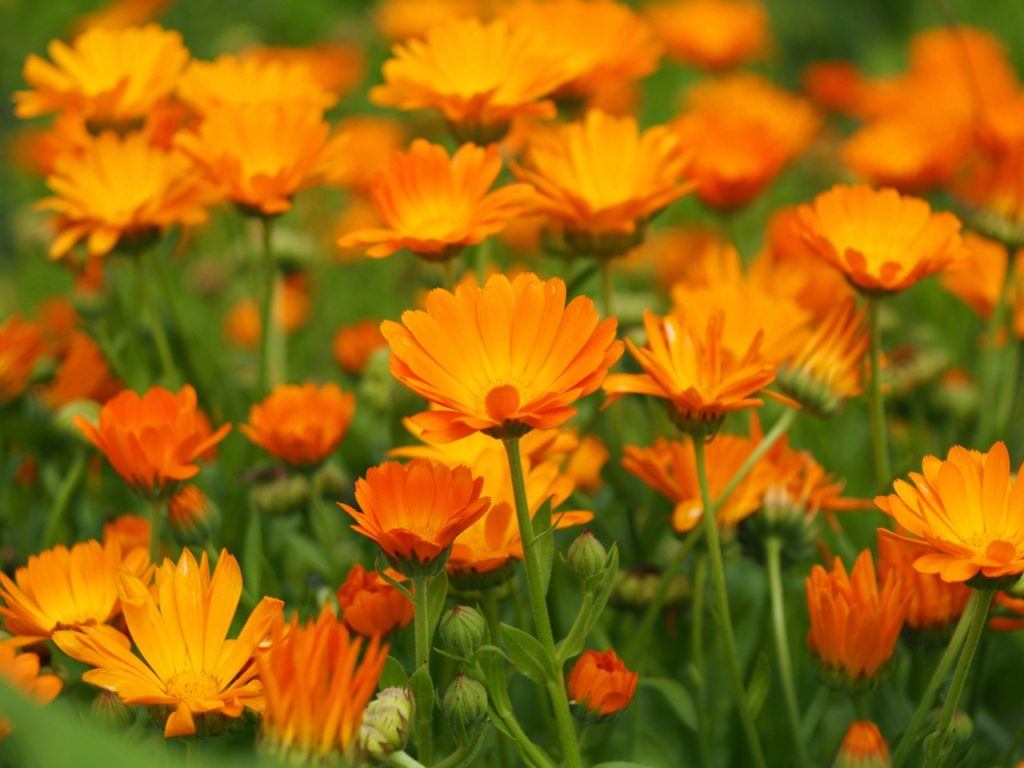
- BOTANICAL NAME: Calendula officinalis
- HARDINESS RATING: H5
- PLANT TYPE: annual / biennial
- FLOWERS: orange
- FLOWERING SEASON(S): summer / autumn
- SIZE: 0.1-0.5m in height, 0.1-0.5m spread
Calendula officinalis, or pot marigold, is beloved by gardeners because of its bright orange blooms and its low-maintenance tendencies.
This annual grows well in many different garden displays, but if you grow fruit or vegetables in your beds, I’d recommend planting some pot marigolds nearby, as they are first-rate companion plants.
They can act as a trap for slugs and snails and can also attract beneficial pollinators to your veg patches.
“If drought-stressed, Calendula have a tendency to suffer from powdery mildew, so I’d recommend keeping them watered during dry spells,” shares Roy.
30) Blackfoot Daisy
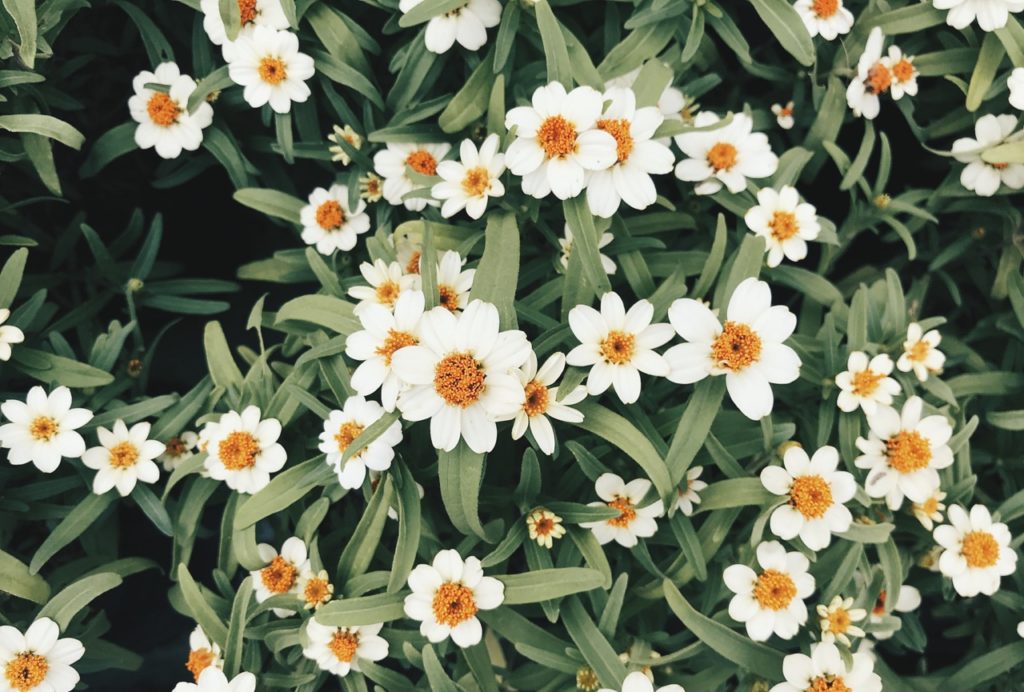
- BOTANICAL NAME: Melampodium leucanthum
- HARDINESS RATING: H6
- PLANT TYPE: perennial
- FLOWERS: white and yellow
- FLOWERING SEASON(S): spring / summer / autumn
- SIZE: 0.1-0.5m in height, 0.5-1m spread
From the same genus as the butter daisy, this perennial is known for its long-lasting white blooms that usually flower from early April to late September.
Blackfoot daisy is a great option for dry or gravel gardens as it requires well-drained soil.
31) Mexican Sunflower

- BOTANICAL NAME: Tithonia ROTUNDIFOLIA
- HARDINESS RATING: H2
- PLANT TYPE: annual
- FLOWERS: orange
- FLOWERING SEASON(S): summer / autumn
- SIZE: 1.5-2m in height, 0.1-0.5m spread
The Mexican sunflower features long, lobed petals with vertical indents and a deep orange hue.
Each plant will yield tens of flowers – each up to 8cm in diameter on stems up to 2m tall.
Tithonia rotundifolia will thrive if planted in a protected site with plenty of sun.
“The stand-out cultivar to look for in the seed catalogue is T. rotundifolia ‘Torch’,” shares Roy.
“Regular deadheading will ensure flowering right through into November until the first frosts for this cultivar.”
32) Michaelmas Daisy

- BOTANICAL NAME: Symphyotrichum × salignum
- HARDINESS RATING: H7
- PLANT TYPE: perennial
- FLOWERS: white and yellow
- FLOWERING SEASON(S): summer / autumn
- SIZE: 1-1.5m in height, 0.5-1m spread
Symphyotrichum × salignum, more commonly referred to as the Michaelmas Daisy, is a fully hardy perennial with white and yellow daisy-like flowers that bloom from late May until the start of September.
It is part of the aster family, and will look best in a wildflower meadow with other low-maintenance perennials.
Just make sure it is not grown in acidic soil – this plant cannot tolerate pH levels lower than 4.
33) Sunflower ‘Lemon Queen’

- BOTANICAL NAME: HELIANTHUS ‘LEMON QUEEN’
- HARDINESS RATING: H4
- PLANT TYPE: perennial
- FLOWERS: yellow
- FLOWERING SEASON(S): summer / autumn
- SIZE: 1.5-2.5m in height, 0.5-1m spread
A recipient of the RHS Award of Garden Merit, H. ‘Lemon Queen’ is truly a delight for both the gardeners who grow it and for the pollinators who frequent its flowers during summer.
With lemony-yellow flowers growing on tall stems which will require staking in more exposed positions, this hardy perennial will make a great addition at the back of a perennial border as long as it is not grown in acidic conditions.
34) Ox-Eye Daisy

- BOTANICAL NAME: Leucanthemum vulgare
- HARDINESS RATING: H7
- PLANT TYPE: perennial
- FLOWERS: white and yellow
- FLOWERING SEASON(S): spring / summer
- SIZE: 0.5-1m in height, 0.1-0.5m spread
Ox-eye daisies are as similar to the real thing as you can get.
These low-maintenance perennials produce white and yellow blooms throughout spring and summer and are great plants for filling low-effort meadow areas and as low-growing border plants for paths and edging.
35) Gerbera Daisy
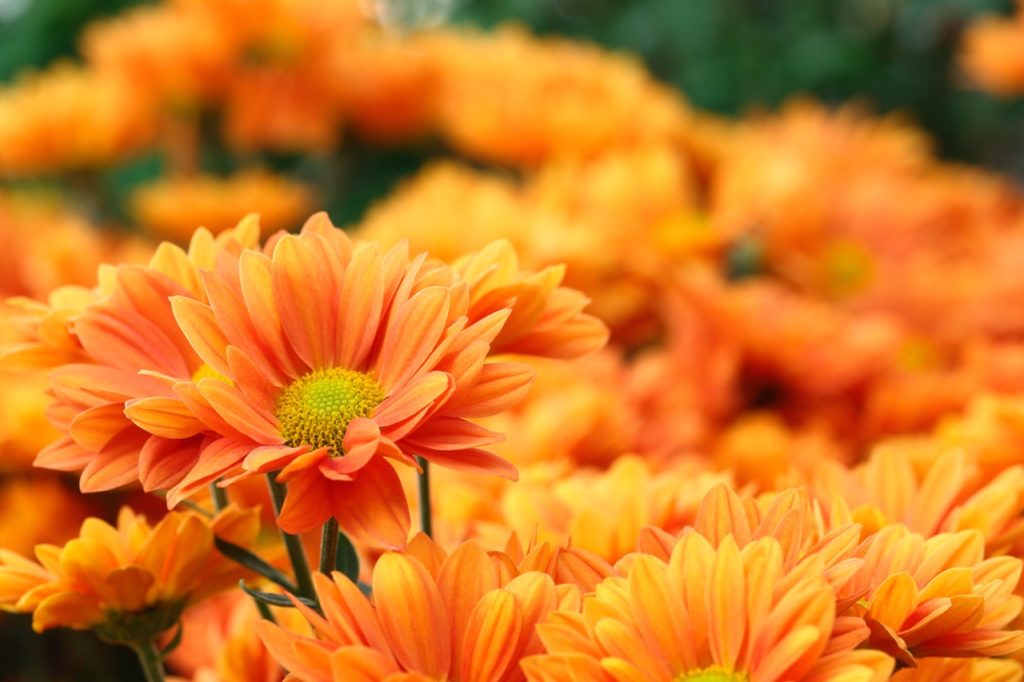
- BOTANICAL NAME: Gerbera ‘GARVINEA SWEET SUNSET’
- HARDINESS RATING: H3
- PLANT TYPE: perennial
- FLOWERS: varies
- FLOWERING SEASON(S): summer / autumn
- SIZE: 0.1-0.5m in height, 0.1-0.5m spread
Gerberas are popular perennials with a number of cultivars in the ‘Garvinea’, ‘Garvinea Sweet Series’ or ‘Everlast Series’ in eye-catching oranges, reds and yellows which bloom through the summer into the autumn.
As they are hardy to -5°C, they will only survive in milder parts of the UK in well-drained soil.
G. jamesonii is a tender houseplant with a hardiness rating of H1C, blooming in the same range of colours and can be grown inside on a sunny windowsill.
36) Dyer’s Tickseed
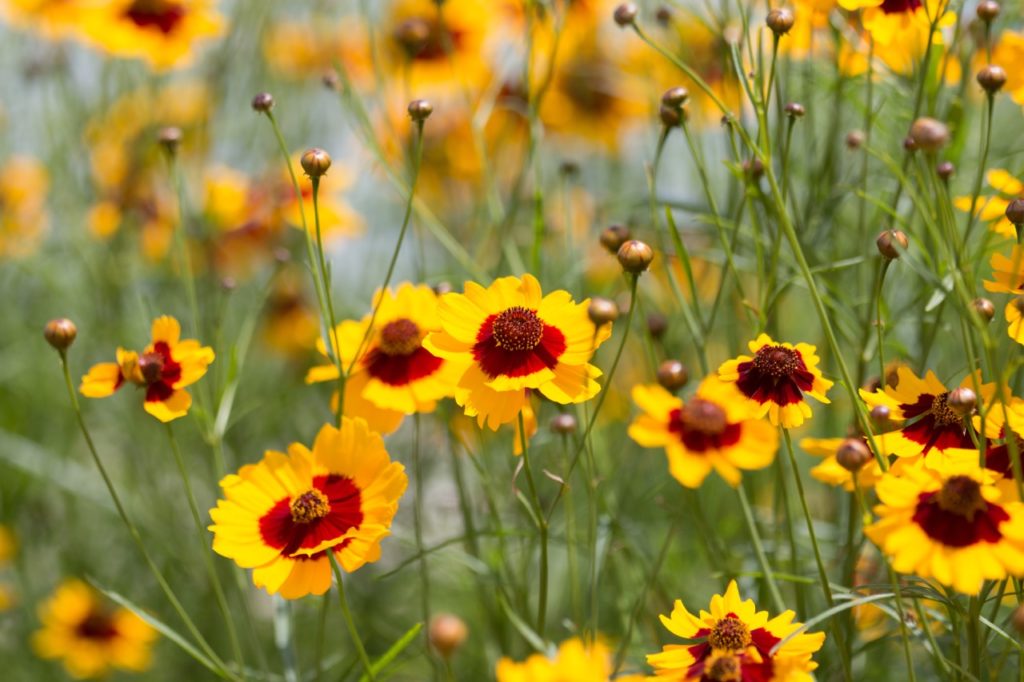
- BOTANICAL NAME: Coreopsis tinctoria
- HARDINESS RATING: H6
- PLANT TYPE: annual
- FLOWERS: red and yellow
- FLOWERING SEASON(S): summer / autumn
- SIZE: 0.5-1m in height, 0.1-0.5m spread
An easy-to-grow annual, dyer’s tickseed produces red and yellow flowers in summer and autumn that are ideal drought-tolerant plants, as they grow best in a well-drained medium.
Wherever you choose to grow Coreopsis tinctoria, make sure it is planted in a spot where it will get lots of sun throughout the day.
37) Purple Coneflower
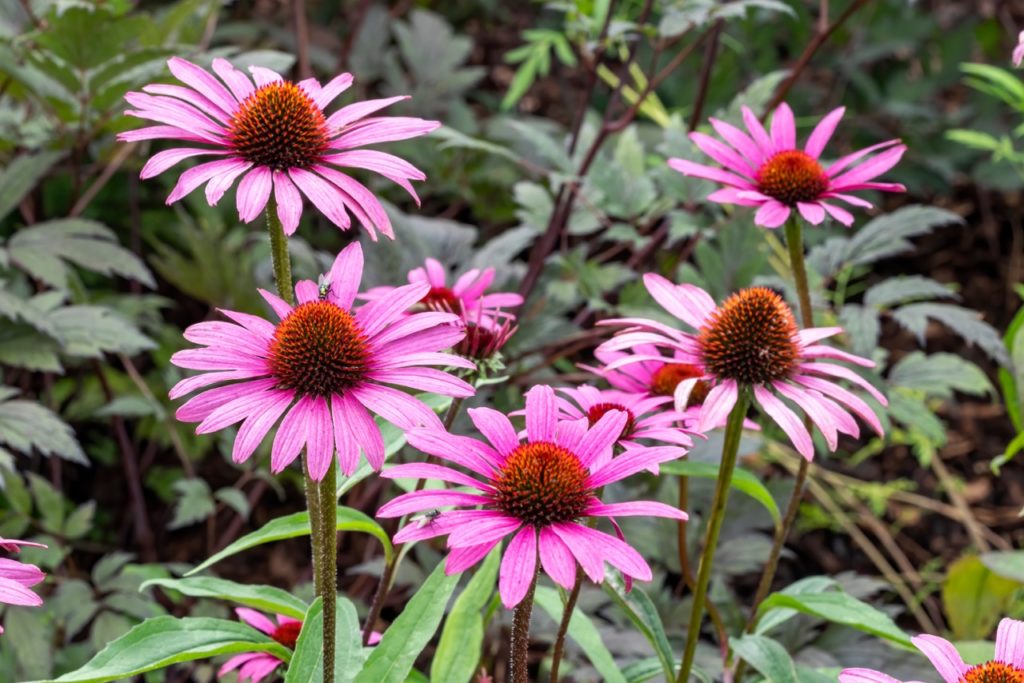
- BOTANICAL NAME: Echinacea purpurea
- HARDINESS RATING: H5
- PLANT TYPE: perennial
- FLOWERS: brown, pink and purple
- FLOWERING SEASON(S): summer / autumn
- SIZE: 1-1.5m in height, 0.1-0.5m spread
Echinacea purpurea, or the purple coneflower, is a vivid flowering plant that grows up to 1.5m in height and is a popular garden flower here in the UK.
This popular daisy-like perennial is a fantastic choice for pollinators in a wildlife-friendly garden and also for more natural planting schemes where it can grow alongside other unfussy summer-flowering plants.
38) Curly Leaf Daisy

- BOTANICAL NAME: Arctotis revoluta
- HARDINESS RATING: H5
- PLANT TYPE: shrub
- FLOWERS: yellow, white and orange
- FLOWERING SEASON(S): spring / summer / autumn
- SIZE: 0.5-1m in height, 0.5-1m spread
The curly-leaf daisy is a small, low-growing shrub that produces flowers with long yellow petals and centres.
Unsurprisingly, this plant also bears curly kale-like leaves that are often covered in a layer of fine hair.
Although it’s not typically grown here in the UK, Arctotis revoluta is relatively easy to grow here and would make a fine addition to any garden bed or border.
39) African Daisy ‘Flame’
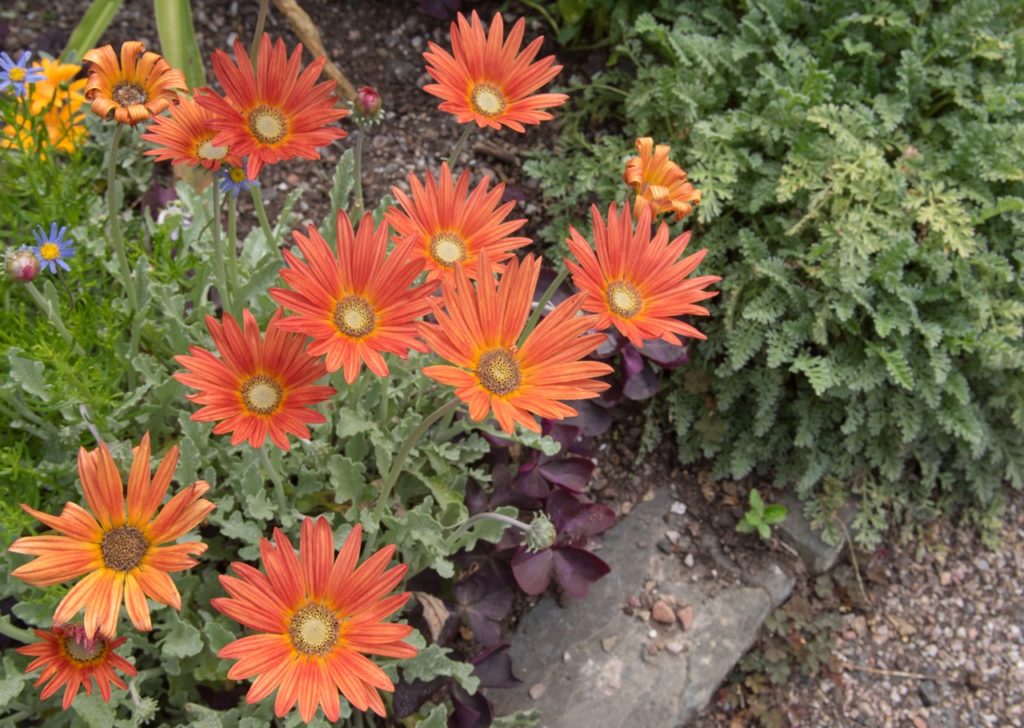
- BOTANICAL NAME: Arctotis × hybrida hort. ‘Flame’
- HARDINESS RATING: H2
- PLANT TYPE: perennial
- FLOWERS: orange and red
- FLOWERING SEASON(S): summer / autumn
- SIZE: 0.1-0.5m in height, 0.1-0.5m spread
With bright fiery blooms that appear in early summer and last for months on end, African daisy ‘flame’ is an astute choice for any garden.
Although ‘Flame’ is H2 hardy, if it is given the right protection over winter it can flower for many years.
Grow in a site in full sun with a well-drained growing medium in order to achieve the best results.
40) Florist’s Cineraria

- BOTANICAL NAME: Pericallis × hybrida
- HARDINESS RATING: H1C
- PLANT TYPE: perennial / annual / houseplant
- FLOWERS: red, blue, white, purple and pink
- FLOWERING SEASON(S): winter / spring
- SIZE: 0.5-1m in height, 0.5-1m spread
Finishing this list is a stunning houseplant that is easy enough to grow indoors for even the most novice gardener.
Florist’s Cineraria produce beautiful bicoloured flowers that gradate with a range of different colours from purple to red, to blue and white.
When grown in a container, you can place this houseplant outdoors in late spring.

